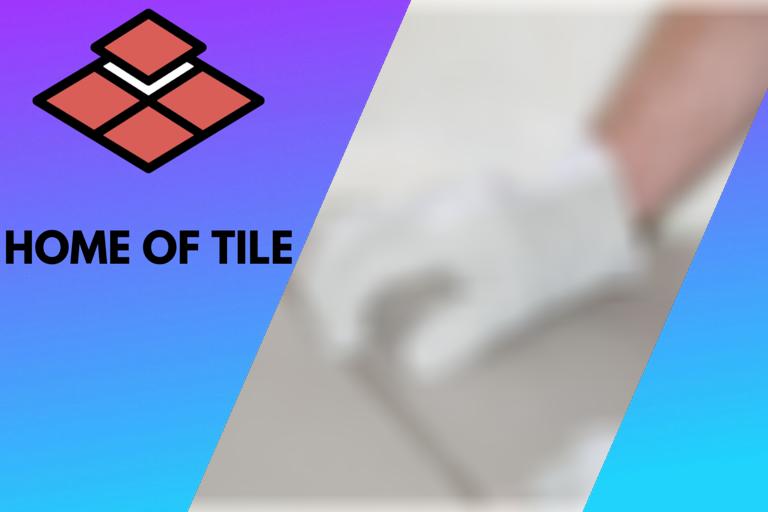Tiling Challenging Locations: 9 things you should know
Laying tiles on any surface is something that most people can learn. But for a good result, you need to prepare the surface correctly. If there are bumps or dips on the surface, it can cause cracks in the tiles when weight is applied to them. To achieve a more aesthetic look, squaring a room is suggested by experts before starting to lay tile.

Throughout this article, you will learn about different methods of squaring a room for tiling and learn a few techniques to resolve issues regarding uneven surfaces.
Contents
- 1 How to square a room for tiling, some helpful tips:
- 2 How to fix uneven walls before tiling, some helpful tips:
- 3 How to fix an uneven floor before tiling, some helpful tips:
- 4 How to square a wall for tiling, some helpful tips:
- 5 Tiling envelope cuts, some helpful tips:
- 6 Tiling up to an uneven ceiling, some helpful tips:
- 7 Tiling vertical surfaces, some helpful tips:
- 8 Tiling walls that are not straight, some helpful tips:
How to square a room for tiling, some helpful tips:
In general, there are three methods to square a room for tiling:
- Method 1: Make equal quadrants
- Method 2: Measuring diagonal lengths
- Method 3: Measuring horizontal lengths
If your room is not square and you just start tiling, the end result will not look good. In that case, it is important to find the best location to start. This is where squaring your room will help. There are several different methods to square a room for tiling. You can make equal quadrants in the room, and you can also use diagonal lines to help find the center point of the surface. Similarly, you can find the center of the room by measuring the center of each side of the floor and then connecting the opposite points. If you want to have your room look like it was tiled by a professional, it is essential to square it first.
● Method 1: Make equal quadrants
To square the room, you need to make equal quadrants in the room starting from the center. Problems can arise in homes where rooms are not completely square. In this scenario, measure the length of one side of the floor and divide that measurement in half. It will give you the center of that side. Make a mark at that point and then measure the opposite side of the floor using the same technique and mark a point there. Draw a straight line from one mark to the other using chalk.
Repeat the same procedure for the remaining sides of the floor and draw a line using chalk from one point to another. This line intersects with the first line will be the center of the room, making four equal quadrants. Now, you can start laying tiles from the center, moving outwards toward the wall, completing each quadrant one by one. These quadrants help ensure you lay the tiles perfectly over the surface.
● Method 2: Measuring diagonal lengths
The second method that can be used to square a room is by measuring the diagonal lengths of the floor. For best results, measure the length of the floor using tape from one corner to the other. Repeat the same process for the remaining two corners and snap a line from the two corners. The diagonal lines will meet each other at the center, making an X shape. If both the measurements are equal, your room is squared, otherwise adjusting the assembly until the diagonals are equal.
● Method 3: Measuring horizontal lengths
Another method that can be used to square a room is by measuring each wall’s horizontal length and dividing each length by two to get the center of each wall. Make a point on the floor of each wall. Draw a straight line from one point to the opposite point of the wall. Similarly, connect the remaining two points with a straight line using chalk. The point where both lines intersect each other in the center of the room and should be making a plus sign on the floor.
How to fix uneven walls before tiling, some helpful tips:
The most common ways to prepare a surface for tiling are plastering, backer boards, and leveling. This ensures that a wall or floor is in the best condition prior to tiling.
There are several ways to fix and prepare a bumpy or uneven surface:
● Leveling the wall:
Firstly, you need to remove any nails or screws and get rid of any loose plaster from the wall. Tear down any wallpaper from the wall and sand the surface so that the adhesive can maintain a strong bond between the tiles and wall. Next, scrape off any fresh paint from the wall. If the paint is in fair condition, no action is needed. As paint ages, it loses the chemicals that react with the thin-set, and the surface is not able to bond as effectively. It is best to remove fresh paint, but old paint may remain.
In the next step, clean the wall surface completely to eliminate any dust and debris and then mark all the uneven points on the wall. An easy way to do this is to take a straight edge and slide it over the surface to identify uneven areas. Mark all the high and low spots with cracks and holes. Then, mix a compound filler and fill all the cracks and holes on the surface with it. Remove any excess from the surface and flatten it out using a trowel. Similarly, to level any high spots on the wall’s surface, grind them using the grinder.
● Plastering to fix an uneven wall:
Plastering can be used to level the uneven walls and to ensure that your wall is ready for tiling. Plastering a wall looks easy but can be a difficult task for someone unfamiliar with the process. But because the plaster will be covered with tiles, some imperfections are not a problem.
● Use Backer boards to fix an uneven wall:
A simple method that can be used to fix any uneven walls is laying a backer board over them. The main advantage of using backer boards is that they can be easily adjusted on the wall and are moisture resistant. Backer boards can be easily screwed into the wall to provide a flat and even surface for tiling.
How to fix an uneven floor before tiling, some helpful tips:
In general, there are two methods to fix an uneven floor:
- Use a self-leveling compound to smoothen and level the floor
- Fix the bumps, holes, and cracks
Before tiling a floor, you must ensure that it is smooth and level, without any significant dips and bumps. Tiles are more likely to crack when placed on uneven floors, and tile joints can protrude when weight is applied to them. If the floor itself is reasonably straight but has holes, cracks, and bumps, it makes more sense to fix those. When the floor itself has more damage or is not even, using a self-leveling compound on top of the current floor is a better option.
To remove the cracks and bumps, you use the following steps:
● Step 1: Clean the surface
The first step in the preparation of any surface is to clean it from any dust and debris. Before tiling the floor, everything on the top of the surface must be removed, such as glue, adhesive, tar, resin, and paint. These substances create an extra layer between the thin-set and the floor and can negatively affect the grip and bond of the tiles with the floor. You can use a floor grinder for this, or use a chemical paint or glue remover.
● Step 2: Identify the uneven areas on the floor
The next step is to mark all holes and cracks on the surface with chalk and then repair them. Firstly, clean all the holes and cracks and lightly wet the area so that the concrete cannot absorb any moisture from the compound filler after applying it between the holes.
● Step 3: Fill the holes using a compound filler
Mix the compound filler according to the manual instructions. Apply it over the holes and cracks with the help of your finger.
Fill bigger and larger cracks with a trowel and remove the excessive filler. Smooth the filler flat using the trowel and leave it to dry. If it appears to be dripping from any area, apply more filler to that area and allow it to dry. After the cracks are repaired and dry, cover them with a polyurethane sealant to prevent extra moisture and humidity.
How to square a wall for tiling, some helpful tips:
In general, make equal quadrants on the wall to square it for tiling. Measure the height of the wall and draw a straight line at the top and bottom of the wall. Similarly, measure the width of the wall and divide both of the measurements in half. Draw the straight horizontal and vertical lines according to the results, and the point where both lines intersect is the center of the room. Now, you can lay tiles on the wall surface starting from the center towards the sides, completing each row one by one.
Tiling envelope cuts, some helpful tips:
First, dry-fit the tiles after cutting them and set the tiles section by section to ensure that grout joints are in line with each other. Make sure to leave a gap between the new tile and floor to create a proper slope for the water to drain away. During the installation of these envelope cut tiles, be sure to leave a 1/8 inch grout joint. This will give you room to make any small adjustment of the tiles in case they did not settle properly.
Envelope cuts are used in showers to set the large format tiles with a regular point drain. As larger and larger tiles are currently being used, installing these tiles is a more significant challenge than using smaller tiles. This process of envelope cutting, also known as diagonal cutting, is primarily used in the washroom to ensure the proper layout, directing the water to the drain.
Tiling up to an uneven ceiling, some helpful tips:
In general, start tiling from the bottom to the ceiling. Ensure you start horizontally. If possible, stop before the ceiling, and paint the remaining part. Else use some thick paper to make a mold for the part between the last row and the ceiling. Use the mold to cut the tiles.
Tiling vertical surfaces, some helpful tips:
In general, for vertical tiling vertical surfaces, start from the bottom to the top. Ensure that the starting point is horizontal. Before starting, try to establish a complete layout of your tiling design. This will give you an idea about where to start your tiling and reduce the error risk.
Tiling the vertical surface from top to bottom is a more difficult task because of the risk that the tiles may slip down. When establishing a layout, make equal quadrants on the wall surface and complete each quadrant one by one.
When tiling from the bottom, you should double-check if the starting point is horizontal. If the floor in which you are tiling the wall is not completely horizontal, and is somewhat sloped, the joints of the wall tiles become uneven and will end up looking poor. If you only have one wall, this is less of a problem. You can solve this problem by tiling the wall with the highest slope and then using the same starting height for all the other walls.
If you do not tile from the floor up, use a level and long ruler to mark a horizontal straight line on the wall.
Tiling walls that are not straight, some helpful tips:
In general, there are two main methods for tiling a wall that is not straight. If the problem is more some areas with bumps, holes, and cracks. Fix those and use smaller tiles. If the problem is more extensive, you can also plaster the surface or use a backer board to cover the uneven areas on the surface.
You can check if the wall is straight or not using a straightedge. Slide a straightedge over the wall. If both ends of the straightedge do not rest on the wall at the same time, the wall is bowed. Or if both ends are on the wall, but the middle is not, the wall is bowed as well.
If the problems are local spots, you can fill those parts with a compound filler to level them. Or, in the case of the bump, use a grinder. It is recommended to use smaller tiles for your project because they can be easier to install and hide the uneven wall.







